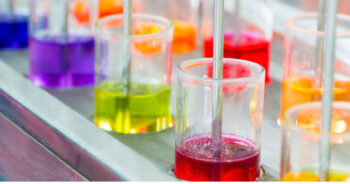 Researchers at Australia’s Flinders University have discovered a way to degrade and potentially remove toxic organic chemicals, including azo dyes, from wastewater using a chemical photocatalys is process powered by ultraviolet (UV) light.
Researchers at Australia’s Flinders University have discovered a way to degrade and potentially remove toxic organic chemicals, including azo dyes, from wastewater using a chemical photocatalys is process powered by ultraviolet (UV) light.
The process involves creating metallic ‘clusters’ of just nine gold (Au) atoms chemically ‘anchored’ to titanium dioxide that in turn drives the reaction by converting the energy of absorbed UV light, said Gunther Andersson, professor of physical chemistry and nanotechnology at the Flinders Institute for NanoScale Science and Technology, in an university release.
The gold nanocluster cocatalysts enhance the photocatalytic work of the titanium dioxide and reduce the time required to complete the reaction by a factor of six, the research team reported.
“These types of heterogeneous semiconductor-mediated photocatalys are systems provide a significant advantage over other advanced chemical processes,” said Andersson. “It can facilitate the mineralisation of a large range of organic pollutants, like azo dyes, into water and carbon dioxide molecules with high degradation efficiency,” he added.
Nearly half of the dyes used in the textile and dye industry are azo dyes. Methyl orange is widely used as a water-soluble azo dye. With this in mind, the Flinders University researchers have also demonstrated the usefulness of this gold cluster cocatalyst and modified semiconductors for synthesis of the novel photocatalysis systems for degradation of methyl orange.
This study, just published ‘Applied Surface Science’, tested the photocatalys is in a vortex fluidic device developed at the university. The study was supported by the Australian Government and Wine Australia as well as Microscopy Australia and the Australian National Fabrication Facility and Flinders Microscopy and Microanalysis and Microscopy Australia at Adelaide Microscopy.





















